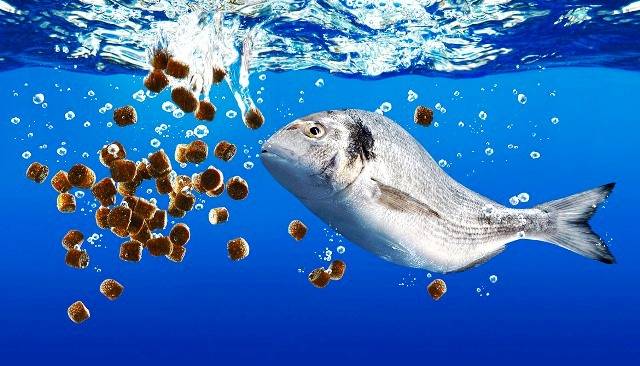
Fishes have adapted to a wide variety of feed. Some of them feed exclusively on plants, others feed on animals while a large number of species are omnivorous, deriving their requirements both from animals and plants sources.
A few fishes depend for their nutrition entirely on zooplanktons and phytoplanktons and are called plankton feeders. (Plankton is an aggregate of passive and free-floating micro-organisms of plant and animal kingdoms). A wide range of organisms naturally grow in a pond ecosystem but are not seen by the naked eye. They are used as feed by the fishes.
The feed of fry and fingerlings is generally different from that of the adult. On a global scale fish farming still largely depends upon natural feed available in the culture pond, supplemented by certain by-products available from agriculture and related industries. In extensive fish farming, most of the nutrient requirements of fish are met from natural sources. However, when high-density fish culture is undertaken, artificial feeds are essential to achieve the production target. Formulation of artificial feeds for any fish requires knowledge of nutritional requirements at different life stages ranging from larval to juveniles and then to adult phases.
A fish feed manufacturer or a farmer should be aware of a number of factors before he/she can start manufacturing the fish feed. They are briefly highlighted here.
Feed types
First of all, he should decide whether he is producing wet feed, moist feed, or dry feed.
Wet feeds
Feeds containing moisture levels in the range of 45-70% are prepared from high moisture ingredients such as trash fish, fishery waste, slaughterhouse waste, etc.
Moist feeds
Here the moisture level ranges between 25-45% and is made from a mixture of high moisture ingredients, as in wet feeds, and dry pulverized ingredients. Wet, moist, and semi-moist diets are considered to be more palatable to most species of fish because of the soft consistency, and good growth and feed efficiency are achieved.
Dry feeds
They contain moisture in the range of 7-13 percent. They are relatively easy to manufacture, transport, store, and convenient to dispense into the culture systems. Dry feeds also permit the production of specialized feeds such as medicated feeds incorporated with specific medicines antibiotics, required to control disease outbreaks.
Dry feeds may be either prepared using dry ingredients alone or a mixture of wet and dry ingredients, adequately processed and dried. Dry feeds may be made as meals, pellets, granules, flakes, etc. It can also be made wet with water, cooked rice water, etc. The wetness should be such that the feed can be pressed into small balls which will not easily dissolve into pond water.
Selection of ingredients and additives
The choice of feed ingredient and additives play a crucial role in feed production. The choice also depends on several factors. They are:
1. Its likely contribution to the finished feed,
2. Its easy availability in sufficient quantities to meet the feed production requirement round the year,
3. Its cost,
4. Its stability during processing, storage and feeding,
5. Its amenability to processing and
6. Its anti-nutritional factors status.

Acceptability or palatability of feeds also depends upon the ingredients and additives. The Pelletability of the feed and its durability is also affected by the physical characteristic of the ingredients.
















